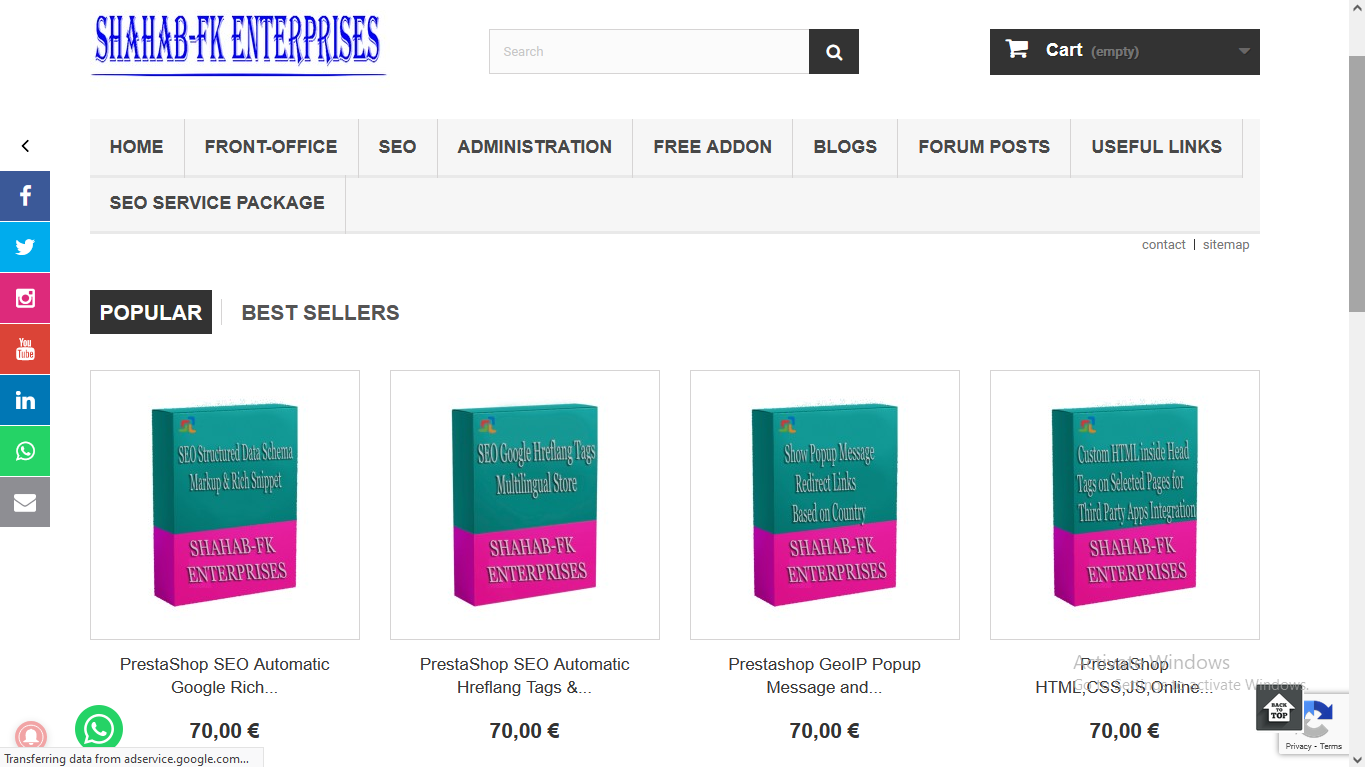In PrestaShop, the home slider (homepage slideshow or carousel) configuration can be managed through the use of a module or directly through the theme settings, depending on your PrestaShop version and the theme you are using. Here are the general steps to configure the home slider:
Method 1: Using a Module (Recommended):
- Log in to your PrestaShop admin panel.
- Navigate to the “Modules and Services” section.
- Look for a module related to the homepage slider or carousel. Common names for such modules include “Homepage Slider,” “Home Carousel,” “NivoSlider,” or similar.
- If you haven’t installed a slider module yet, you can search for a suitable one in the “Add a new module” section, and then install and activate it.
- After activating the module, go to its configuration settings.
- Customize the slider’s appearance, animation effects, speed, autoplay, and other settings based on your preferences.
- Upload or select the images you want to display in the slider and add corresponding captions or links if needed.
- Save your changes, and the home slider should now appear on your homepage.
Method 2: Theme Configuration (if supported):
- Log in to your PrestaShop admin panel.
- Navigate to the “Design” > “Theme & Logo” section.
- Look for settings related to the homepage slider or featured content.
- Depending on your theme, you might find specific options to enable, disable, or customize the slider.
- Configure the slider’s appearance, animation, and other settings as per your requirements.
- Save your changes, and the home slider should now appear on your homepage.
Method 3: Custom Code (Advanced Users):
- If your theme doesn’t have built-in slider support or you prefer more customization, you can also implement a custom slider using HTML, CSS, and JavaScript/jQuery.
- Access your PrestaShop files through FTP or the file manager provided by your hosting service.
- Navigate to the theme’s directory (usually located in
themes/your_theme_name/). - Create a new template file for the slider (e.g.,
slider.tpl). - Add the necessary HTML, CSS, and JavaScript/jQuery code to create the slider.
- Place the slider template code in the appropriate section of your homepage template (e.g.,
index.tplorhome.tpl). - Save the changes and upload the modified files back to your server.
- Clear the PrestaShop cache to ensure your changes take effect.
Please note that the exact steps and available options may vary depending on your PrestaShop version, theme, and installed modules. Always refer to your theme’s documentation and follow best practices when making modifications to ensure compatibility and proper functionality.

